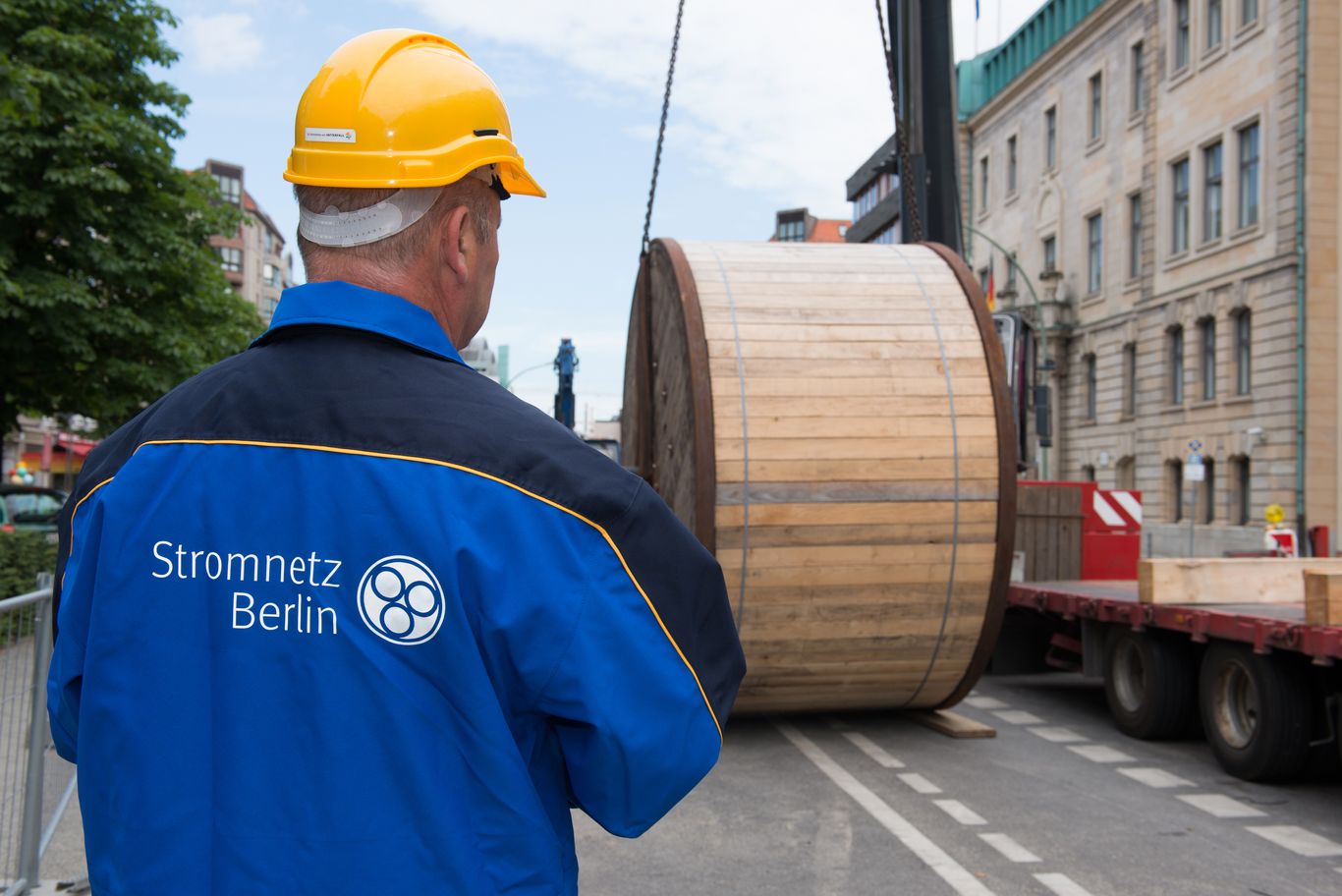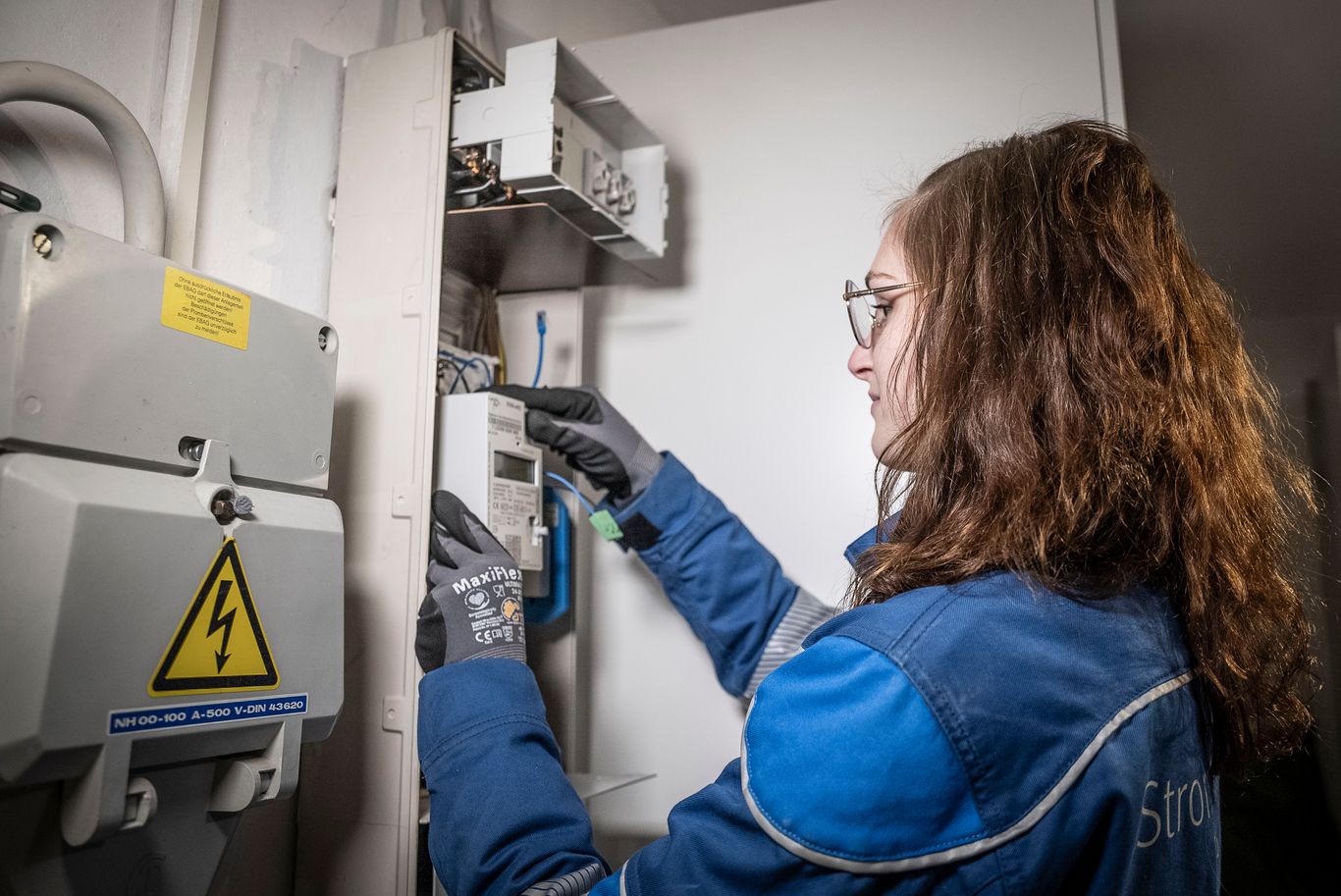Our network makes the energy transition possible
The Berlin energy distribution network is a vital artery of the energy transition. So it can do its work, we keep it fit, build it up and make it ever smarter.
A power boost for the Berlin energy network
Every year, we invest several hundred million in maintaining, renewing and extending the Berlin electricity network. This expansion itself is a positive for the energy transition in our city: we are laying new lines and building new facilities with thousands of new connections which will allow, among other things, solar panels to feed their renewable energy into the grid, or climate-saving electric heat pumps to draw on power. We are also connecting e-mobility charging infrastructure to our network.
In addition, we talk regularly with all the important organisations and companies working on the energy transition in Berlin, and collaborate on plans for municipal heating.

Further optimising security of supply
Our electricity distribution network and plants are designed so that if one element fails, the same task can be carried out by another similar facility. If a cable breaks, for example, customers will be supplied via a second one. This is also an aspect of sustainability.
In 2022, every Berlin connection spent an average of 10.3 minutes without power. Turning it around: each connection had power 99.998 % of the time. This number is gratifyingly high compared to other electrical grids, but not a reason to rest on our laurels: we are constantly working on improving security of supply in Berlin yet further. In case of damage or defects to our facilities or cables, we ensure the fault is cleared up as quickly as possible.
Rollout of modern smart meters
It’s not just us getting more sustainable – we also help our customers to live in a sustainable way. By 2032, for example, all metering points in Berlin should be fitted with modern smart meters. These devices are capable of producing visualisations of consumption over set time intervals. This lets customers use electricity more sustainably.
We want to install at least 325,000 smart meters at our customers’ properties in Berlin by the end of 2030. A smart meter has a communication unit (smart meter gateway) and can, if needed, be remotely read and controlled. This lets Stromnetz Berlin react flexibly to changes in the network and dynamically control customer facilities. A fully digitised low-voltage network is the backbone of this and will become core infrastructure of the energy and heating transition.
You can find out more about the installation of digital meters on our Smart Meters page.

Photo: Andreas Friese
Plugs beat screws
In meter installation, we have come to make frequent use of plug-in technology. This brings a number of advantages. While 3-point meters previously had to have each of the cables running in and out laid individually and screwed on, plug technology sees the meter attach to an adapter plate without any further requirements. The change can take place without an interruption to the electrical supply.
Defining plug technology as standard saves significant resources: 40% less material is used. In addition, 20,000 fewer terminal covers are scrapped each year. This reduces expenditure on disposal.
We are reducing the number of meter models that we are installing for our customers. This simplifies our warehouse inventory – saving space and capacity. In addition, this minimises the number of accessories and the amount of transportation required.
A longer service life reduces resource consumption
Our long-term goal: we want to significantly extend the lifespan of meters. In collaboration with our manufacturers, we make use of life cycle simulations, for example. They allow us to identify the weak points of meters early on and optimise them in a targeted fashion. This makes meters more reliable, letting them stay in service longer. An extension of service life from 16 to 24 years can reduce resource consumption by a significant 50%.
For this reason, we want to include minimum service life provisions in our tendering documents in the future. This will help promote compliance with high quality standards and the use of sustainable technologies across the sector.
Reconditionung of used meters
It happens now and then that meters return to us before their expiry date, for example, when the buildings they were installed in are demolished. Meter reconditioning sees meters that have already been installed at one customer's premises or another being cleaned and checked for damage by our quality assurance department. If possible, defective parts are exchanged. Then the meters are subjected to a technical inspection. If they pass, they can be reissued.
Essential features of meter reconditioning are the careful, respectful handling of raw materials and thus the saving of resources. In this way, we can avoid supply bottlenecks and generate economic advantages.
Customer connections: more and better offers
Our customer portal, set up in 2022, directs customers rapidly, simply and digitally through the processes of applying for and approving solar panels, heat pumps or charging infrastructure. Our customers can find all the information about their request in one place. In this way, we speed up connection times and contribute to the energy transition taking place in Berlin as quickly as possible.
Acceleration of connection times for renewable energy facilities
Without carbon-neutral energy, there is no energy transition. In a large city like Berlin, this means above all installing solar panels on roofs – and the State of Berlin has set ambitious targets with its Masterplan SolarCity Programme: 25% of the electricity consumed in Berlin should come in the future from carbon-neutral solar power.
So that solar power can make its positive contribution to the climate, these facilities need to be connected to the grid as soon as possible. We are working on this at all levels: for example, we have been hiring more staff to our customer connections department. We have also simplified, digitised and accelerated our processes. To this end, we are optimising internal interfaces and processes. In 2023, we handled 11,500 solar connection requests – more than twice as many as in 2022. And we will do everything to make sure we are faster and thus more customer-friendly in the future.
You can find out more about connecting our customers’ buildings or plants to the electricity grid on our Connect page.
